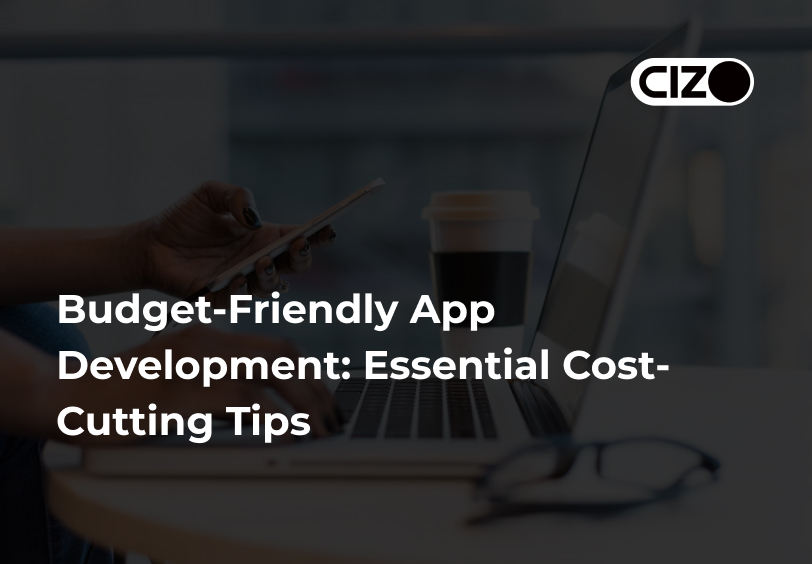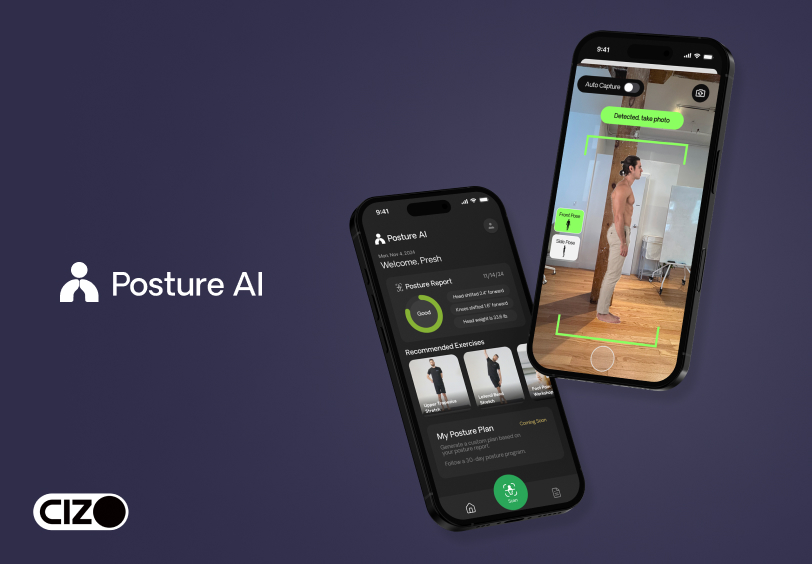 15th February 2024
15th February 2024
Flutter vs. React Native: Which One Should You Choose for Your Next App Development in 2024?
Imagine creating a stunning app that works flawlessly on both iPhones and Android phones, without writing separate code for each. Sounds magical, right? That’s the power of cross-platform app development frameworks like Flutter and React Native. But choosing the right one can feel like picking a superpower – exciting, but confusing! Don’t worry, fellow app developers, this blog is here to guide you through the Flutter vs. React Native battle, making your decision a breeze.
Both Flutter and React Native are like magic wands, letting you build beautiful apps for different platforms with just one codebase. This saves time, money, and effort, making them superhero tools for developers and businesses alike. But each has its own unique strengths and weaknesses, like any good superhero.
We only collect information for business use as detailed in our Privacy Policy
What is Flutter?
Think of Flutter as the artistic, expressive one. It uses its own programming language, Dart, and a special engine to paint your app directly onto the screen. This gives you amazing flexibility and customization, perfect for creating visually stunning and complex apps with smooth animations. Imagine building a game with intricate graphics or a design app with tons of features – Flutter’s your friend
What is React Native?
React Native is the seasoned warrior, wielding the power of JavaScript, a language familiar to many web developers. It uses pre-built components like Lego blocks to assemble your app, making it easier to learn and adapt for those with web development experience. Imagine building a news app or a simple social media platform – React Native might be your best bet.
Let’s break down the history of Flutter and React Native in simpler terms:
Flutter:
Flutter is like a new kid on the block compared to React Native. It was developed by Google and released in 2017. Think of it as a toolbox that helps developers build apps for different platforms like Android, iOS, web, and desktop using a single codebase.
Flutter uses a programming language called Dart. It’s like the language that helps Flutter communicate with your device and make things happen. Dart was also created by Google.
The cool thing about Flutter is its speed and flexibility. It’s like a sports car that can zip through different platforms without much hassle. This is because Flutter apps are compiled directly into machine code, making them fast and efficient.
React Native:
React Native, on the other hand, has been around longer. It was developed by Facebook and released in 2015. It’s also a framework that allows developers to build apps for multiple platforms using one codebase.
The language used in React Native is JavaScript. It’s like the universal language of the web, so many developers are already familiar with it.
React Native was one of the first frameworks to introduce the concept of writing code once and deploying it everywhere. It gained popularity because of its simplicity and the large community backing it.
Both Flutter and React Native have their strengths and weaknesses. Flutter is known for its performance and beautiful UIs, while React Native is praised for its ease of use and extensive community support.
In conclusion, Flutter and React Native are both powerful frameworks for mobile app development, each with its own set of advantages. It’s like having two different flavors of ice cream – both delicious, but it depends on your taste and preference!
Popularity of Flutter and React Native
Flutter and React Native are two popular tools used to build apps. You might be using apps made with them every day without even knowing it. Here are some examples of well-known apps made with these tools:
Apps made with Flutter:
- Google Ads: Helps with managing online ads.
- Grab: A food delivery service app.
- Stadia: A gaming service from Google.
- eBay Motors: Lets you buy and sell vehicles.
- Baidu Tieba: A big communication platform in China.
- Vivafit: A fitness app that uses AI and computer vision.
- Lifely: A diary app for keeping track of important moments.
Apps made with React Native:
- Facebook: Some parts of the app are built with React Native.
- Walmart: The shopping app you might use.
- Bloomberg: A business news app with personalized content.
- Uber Eats: Big in food delivery.
- Wix: Helps you build websites and mobile apps.
- Skype: For video calls and meetings.
We don’t know exactly how many apps are made with these tools, but Google says there are over 500,000 Flutter apps. React Native has been around longer, so it probably has even more apps.
It’s hard to say which tool businesses prefer. But according to Google Trends, more people are interested in Flutter over time.
How Cross-Platform Frameworks Make Apps for Different Devices?
Cross-platform development frameworks help make apps that can run on different types of devices. They do this by letting developers write code that works for multiple platforms at once. Then, the framework translates this code so it works properly on each device, like iPhones or Android phones. This means developers don’t have to rewrite everything for each platform, saving time and effort.
Here’s how they work:
Write Once, Run Anywhere: Developers write their code using the framework’s language or tools. This code is written in a way that can be understood by different platforms, like iOS (Apple), Android (Google), or Windows (Microsoft).
Translation Magic: The framework takes the code and translates it into the language or format that each platform understands. For example, if you wrote code for a button in the app, the framework will make sure that button looks and behaves the same way on an iPhone as it does on an Android phone.
Native Look and Feel: Good frameworks ensure that the apps they create still feel native to each platform. This means they don’t look weird or out of place on an iPhone compared to an Android phone.
Testing and Debugging: Developers can test and debug their apps within the framework. They can see how the app will look and behave on different devices without needing to own every single device.
Updates and Maintenance: When a new version of a platform comes out, or if there are bugs to fix, developers can make changes to their code in one place. The framework then helps update the app across all platforms without needing to rewrite everything from scratch.
Overall, cross-platform development frameworks simplify the app development process by allowing developers to write code once and deploy it across multiple platforms, saving time and effort.
Flutter vs. React Native
Performance:
- Flutter is like a speedy race car; it’s known for its fast performance because it compiles code directly into machine code, making apps run smoothly.
- React Native is more like a reliable sedan; it’s fast too, but sometimes it relies on a bridge to communicate with native components, which can slow it down a bit.
Documentation:
- Flutter’s documentation is like a detailed map with clear directions; it’s comprehensive and easy to follow, making it great for beginners.
- React Native’s documentation is like a good guidebook; it’s helpful, but some parts might need more explanation, especially for those new to app development.
Popularity:
- Flutter is like the cool new kid on the block; it’s gaining popularity quickly, especially among developers who love its hot-reload feature for fast testing.
- React Native is like the seasoned veteran; it’s been around longer and has a bigger user base, but some developers are looking for fresher options.
Community Support:
- Flutter’s community is like a bustling town square; it’s growing rapidly and full of helpful developers ready to answer questions and share resources.
- React Native’s community is like a lively neighborhood; it’s well-established with lots of resources and support forums to help developers troubleshoot.
Industry Trends:
- Flutter is like a rising star in Hollywood; it’s catching the attention of big companies like Google and Alibaba, who are using it for their apps.
- React Native is like a blockbuster movie franchise; it’s still going strong with many popular apps like Facebook, Instagram, and Airbnb built with it.
In simple terms, both Flutter and React Native are great choices for mobile app developers, but they have their own strengths and weaknesses. It ultimately depends on what you prioritize for your project.
Breakdown of the pros and cons of Flutter and React Native apps:
Native Performance:
- Flutter: Offers excellent performance as it compiles down to native machine code.
- React Native: Provides good performance, but sometimes might have slight performance issues due to its bridge between JavaScript and native code.
App Size:
- Flutter: Generally results in larger app sizes due to its built-in UI components.
- React Native: Tends to have smaller app sizes compared to Flutter because it uses native components.
Minimal Required SDK Version:
- Flutter: May require a higher minimum SDK version due to its reliance on newer features and APIs.
- React Native: Can work with lower minimum SDK versions, making it more compatible with older devices.
UI Development:
- Flutter: Provides a rich set of customizable widgets, allowing for flexible and expressive UI designs.
- React Native: Offers a more familiar development experience for web developers, using JSX and CSS-like styling.
Debugging:
- Flutter: Has a robust debugging environment with tools like Flutter Inspector for inspecting UI layouts and Dart DevTools for debugging Dart code.
- React Native: Utilizes tools like Chrome Developer Tools and React Developer Tools for debugging JavaScript code.
Code Reuse Between Mobile Platforms:
- Flutter: Allows for high code reuse between iOS and Android platforms since it uses a single codebase for both.
- React Native: Also enables code reuse, but may require platform-specific code for certain functionalities or optimizations.
In essence, Flutter excels in performance and UI customization but may result in larger app sizes, while React Native offers a more lightweight footprint and familiarity for web developers, though with slightly lower performance and less customization options. Both frameworks allow for code reuse between platforms, but Flutter often requires less platform-specific code.
Learning Curve Showdown: Flutter vs. React Native
Deciding which framework is easier to learn depends on your coding background, like choosing the right lightsaber color – blue for Jedi, red for Sith, but what if you’re a coding grey Jedi? Fear not, young padawan, this breakdown will guide you!
React Native:
- Wields the JavaScript Force: If you’re already a web developer, you’ll have a head start. JavaScript is familiar territory, making React Native feel less like learning a new language and more like building with Lego blocks you already know.
- Community of Masters: With a larger community and more resources available, finding help and tutorials is like having Yoda by your side.
- But Beware the Dark Side: JavaScript can get tricky for complex apps, requiring more code and potentially slower performance.
Flutter:
- Forges a New Path with Dart: Dart is a different language, so it’s like learning a new lightsaber form. But fear not, it’s designed to be beginner-friendly and has a clear learning curve.
- Hot Reloading Power: See your changes instantly, making learning and fixing mistakes faster, like having instant Force healing!
- Limited Masters Guild: The community and resources are smaller, but the official Flutter team is strong, offering excellent documentation and tutorials.
So, Who Wins the App Development Battle?
There’s no single winner, as the best choice depends on your specific needs and preferences. Here’s a quick cheat sheet:
Choose Flutter if:
- You prioritize speed, performance, and unique UI design.
- You’re building a complex app with lots of animations or custom features.
- You’re willing to learn a new language (Dart).
Choose React Native if:
- You’re familiar with JavaScript and want a faster learning curve.
- You’re building a simple to moderately complex app with basic functionalities.
- You need access to a large community and resources.
Remember, the most important factor is your team’s comfort and expertise. If you have a team of experienced JavaScript developers, React Native might be a smoother ride. But if you’re looking for cutting-edge performance and stunning visuals, Flutter could be your secret weapon.
Future Outlook
Some people might think that Flutter is just a temporary trend that will disappear soon. But according to the Stack Overflow survey, many developers like it, and businesses are starting to use it more.
Flutter has become more popular over time, with a 9% increase in popularity from 2019 to 2020. React Native, another similar technology, has stayed about the same in popularity.
Looking ahead to 2024, it’s probable that Flutter will still be more popular than React Native, based on these trends.
Picking the Best Tool: Flutter vs. React Native
Why We Recommend Flutter:
While both are great, we generally recommend Flutter for most projects because it’s:
- Powerful: Handles complex logic and many screens easily.
- Fast & Smooth: Your app feels like a native app, not a “web app in disguise.”
- Secure: Built-in security features protect your users’ data.
Ready to Build Your App?
We’re experts in Flutter app development services and can help you create your dream app. Contact us today to discuss your project and get a quote!
Remember: This is just a general recommendation. The best choice depends on your specific needs and preferences.
A PROJECT WITH CIZO?











 hello@cizotech.com
hello@cizotech.com +91 79907 01039
+91 79907 01039 


